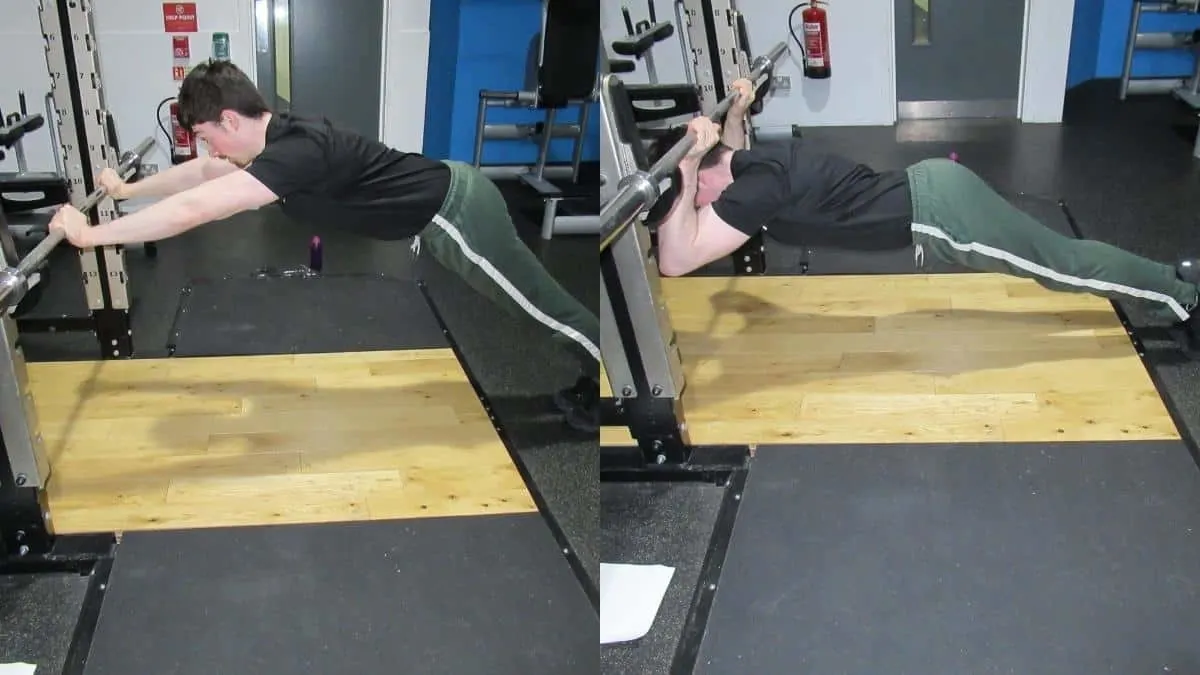Bodyweight skull crushers are a highly underrated mass-building triceps movement that you can do virtually anywhere. While most people perform the bodyweight skull crusher on a barbell that’s positioned in a squat rack—or on the Smith machine—you can also do the exercise on a sturdy desk or table.
This guide discusses the benefits of bodyweight skullcrushers and then demonstrates six additional variations that you can do to make the movement easier, harder, and/or more accessible.
Related: Weightless tricep exercises
Bodyweight skull crusher exercise details
- Also Known As: Bodyweight nose crusher, bodyweight tricep extension
- Main Muscles: Triceps
- Secondary Muscles: Abs
- Exercise Type: Strength
- Exercise Mechanics: Isolation
- Difficulty Level: Intermediate
- Equipment Needed: Barbell and rack
How to do bodyweight skull crushers
- Position a bar in a squat rack at hip height.
- Stand facing the barbell and then grab it with a shoulder-width overhand grip.
- Shuffle your feet backward, brace your core, and align your neck with your upper back.
- Lower your head under the bar—by breaking at your elbows—until you feel a strong stretch in your triceps.
- Reverse the motion by forcefully pushing your hands into the bar and extending your elbows.
- Keep going until your elbows reach complete extension.
- Repeat for 3-5 sets of 8-20 reps.
Bodyweight skull crusher benefits
Even though you won’t be using any external resistance for body weight skull crushers (at first), the exercise is still excellent—virtually as effective as regular skull crushers—for building titanic triceps and powerful arms.
Builds triceps mass
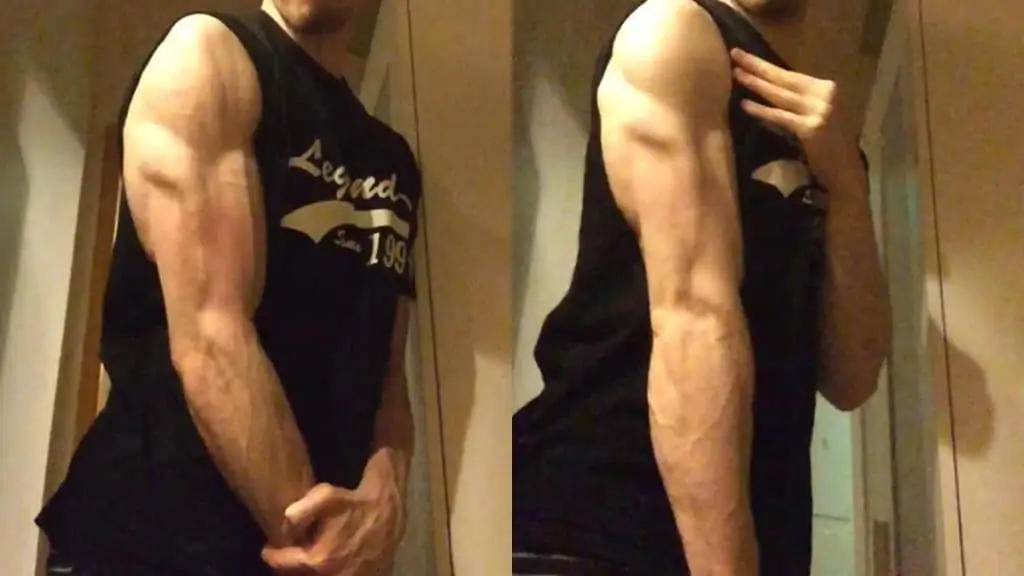
The body weight skull crusher trains all three tricep heads so that your arms look well-developed from all angles, which, for the triceps, means when your arms are looked at from the back and sides.
But because bodyweight skulls also incorporate some shoulder extension, the exercise gives special attention to the biggest head of the triceps—the long head.
The long head resides on the inner part of your arm and, in the same way that the triceps make up two-thirds of your upper arm mass, the long head accounts for roughly two-thirds of your triceps size.
So whenever you want to bulk up your arms, it’s imperative that you perform exercises, such as bodyweight skull crushers, that place the long head of the triceps under a significant stretch.
Increases your triceps strength
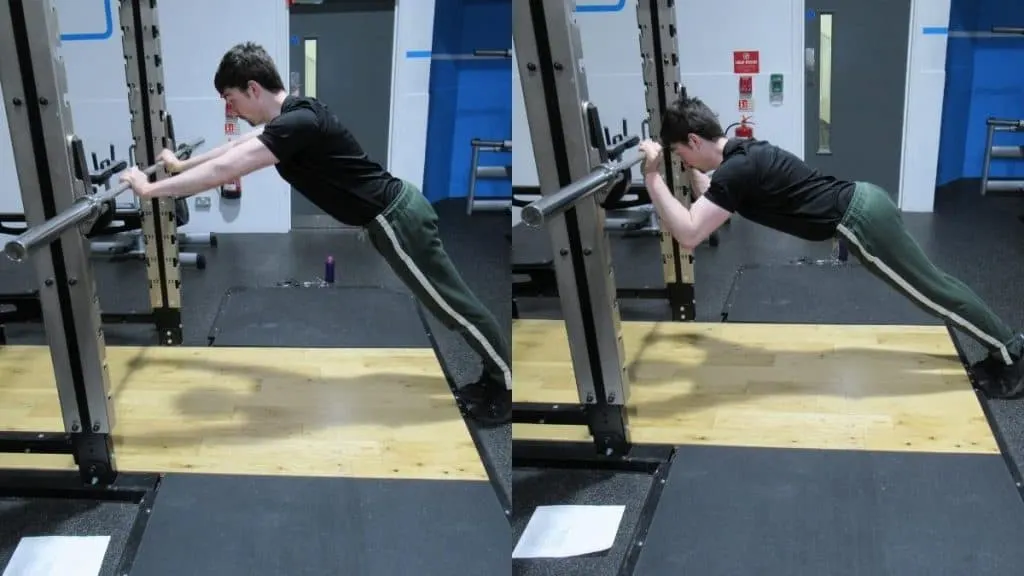
Bodyweight training is great for building muscle up to a point because the resistance is always relative. As such, anyone can benefit from performing moves like the body skull crusher.
Yet, when you can already lift your bodyweight for multiple sets of 15-20 reps, calisthenics isn’t really challenging enough to stimulate new muscle growth.
That is, of course, unless you apply external resistance or modify the movement to make it harder.
We’ll discuss some brilliant bodyweight skull crusher modifications in just a minute. But did you know that you can also make bodyweight skull crushers equally as effective as free-weight skull crushers by wearing a weighted vest?
After all, your triceps certainly can’t tell whether you’re lifting a barbell or a percentage of your bodyweight because they’re just pieces of meat that respond to tension.
So even if you’re accustomed to performing heavy free weight exercises, don’t let people tell you that calisthenics drills like body weight skull crushers aren’t optimal for gaining mass and strength.
With the addition of a weighted vest, bodyweight skullcrushers can rival any free-weight equivalent in mass building and strength development. Also, they’re an excellent tricep pressdown alternative if you don’t have access to cables.
Strengthens your core
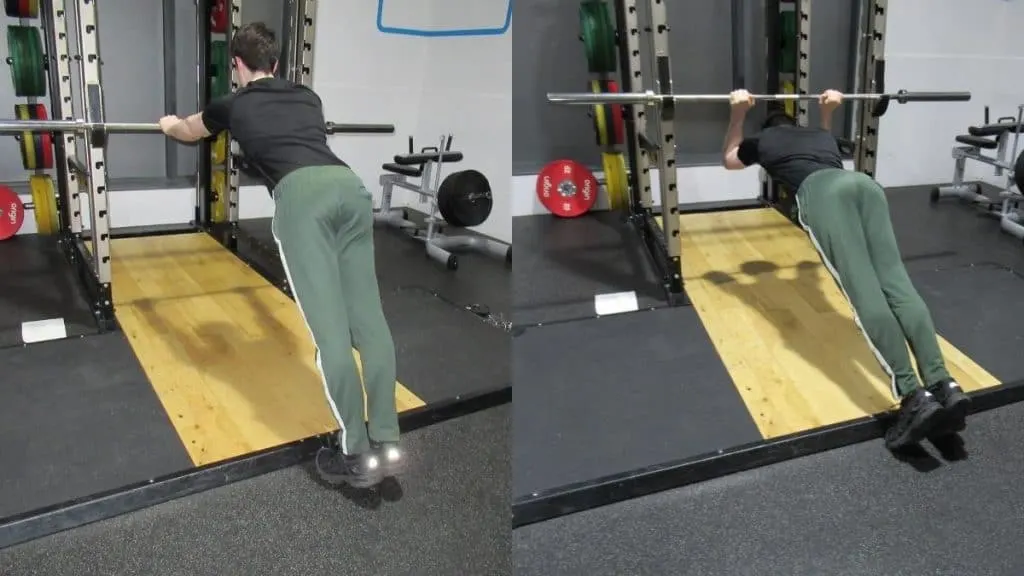
Like TRX skull crushers, bodyweight skull crushers strengthen your core because you have to forcefully contract your abs during the exercise to keep your torso straight.
If you didn’t brace your core during the body weight skull crusher, then your hips would sag, and your triceps would actually have to do less work. But by keeping your abs tight, your body stays over and above your triceps and naturally makes them work harder.
The abdominals respond excellently to isometrics, which is precisely what you’re getting from the bodyweight skullcrusher.
By learning to brace your core for prolonged periods of time, you’ll develop better core stability across all of your compound movements because your abs will be accustomed to contracting intensely for the entire duration of your set.
Causes less elbow discomfort
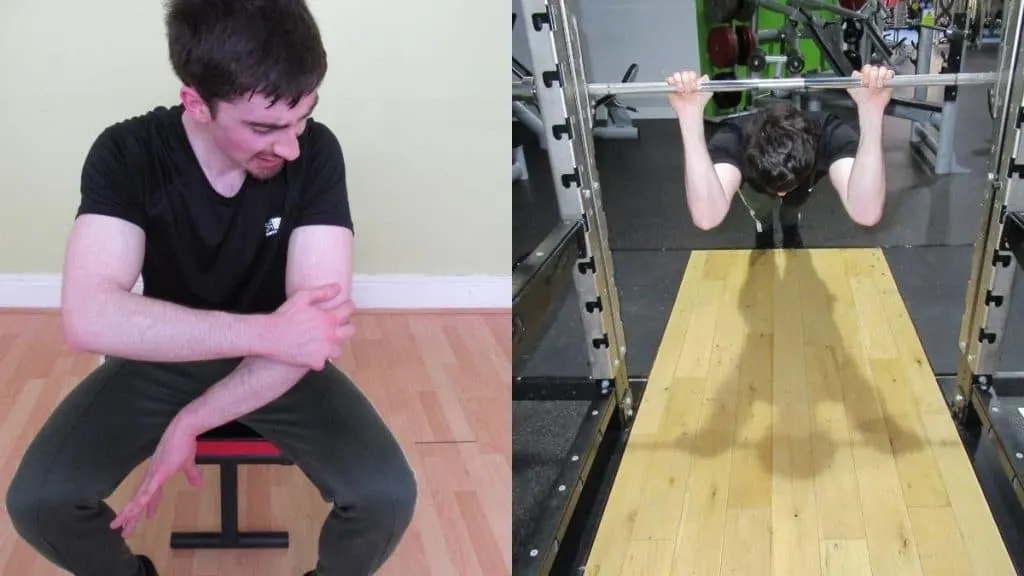
Although body weight skullcrushers don’t guarantee a pain-free lifting experience, many lifters find them to be more elbow-friendly than free-weight skull crushers.
Lowering your head under the bar rather than to the bar will typically make the movement even less taxing on your elbows—and much tougher on your triceps—because by doing so, you’re allowing more shoulder movement and thus taking stress off your elbows while simultaneously increasing the activation of the long head of your triceps.
Sticking to sets of 12-20 reps, which is more applicable when you’re using external resistance, is another good way to lessen the potential elbow discomfort.
Similarly, if adding any kind of weight to bodyweight skull crushers bothers your elbows, then you can use some intensity techniques (more on those in a sec) to compensate for the reduced resistance.
Saves you time
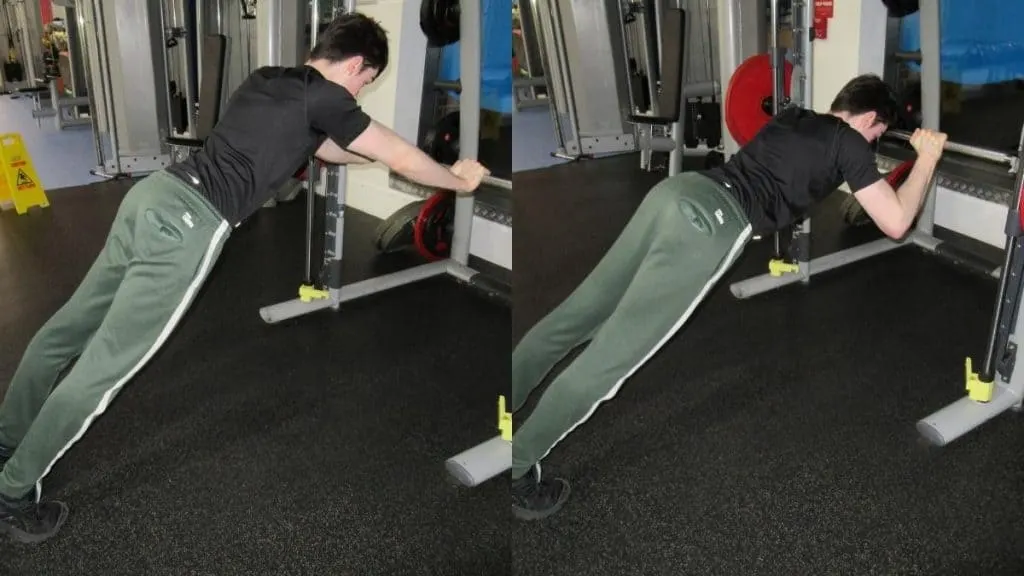
With the bodyweight skull crusher, there’s no need to load weights onto a bar or go on a barbell collar hunt around the gym; you just place your hands on the bar and start pumping out your reps.
Yet, a barbell, while undeniably convenient, is entirely optional for this exercise.
You can perform bodyweight skullcrushers on any sturdy surface, whether that be a table, desk, sofa, or some equipment at the park.
The only reason that a barbell is most recommended is that bars are easy to grip and are a common feature in virtually every decent gym.
Bodyweight skull crusher variations
There are six additional body weight skull crusher variations that you can perform to train your triceps. Some are direct substitutes for the standard version, others simplify the movement to make it easier, and others still make the exercise harder to challenge and change your triceps.
We’ve listed the exercises in order of difficulty, starting with the most straightforward variation and working our way up to the toughest possible bodyweight skullcrusher.
Kneeling bodyweight skull crushers

If you’re not strong enough to perform at least eight full bodyweight skull crusher reps, then you can build up to the real thing by doing bodyweight skull crushers on your knees.
You’ll need an exercise mat for this one because your knees are going to be pressed into the floor.
Essentially, you want to assume a tall kneeling position and then place your hands on the bar at shoulder-width. Then, lean forward so that your feet come off the floor. This is the starting position.
Begin the rep by lowering your head under the by (by breaking at your elbows). Or, if that’s too difficult, you can just descend until your forehead almost touches the bar. Once you feel an intense triceps stretch, reverse the movement by pushing your hands into the bar and extending your elbows until they reach complete extension.
You need to perform high reps on the kneeling bodyweight skull crusher if you want to develop enough strength to tackle the standing version because one rep of the kneeling version is much easier than a rep of the standing variation.
Forehead bodyweight skull crushers
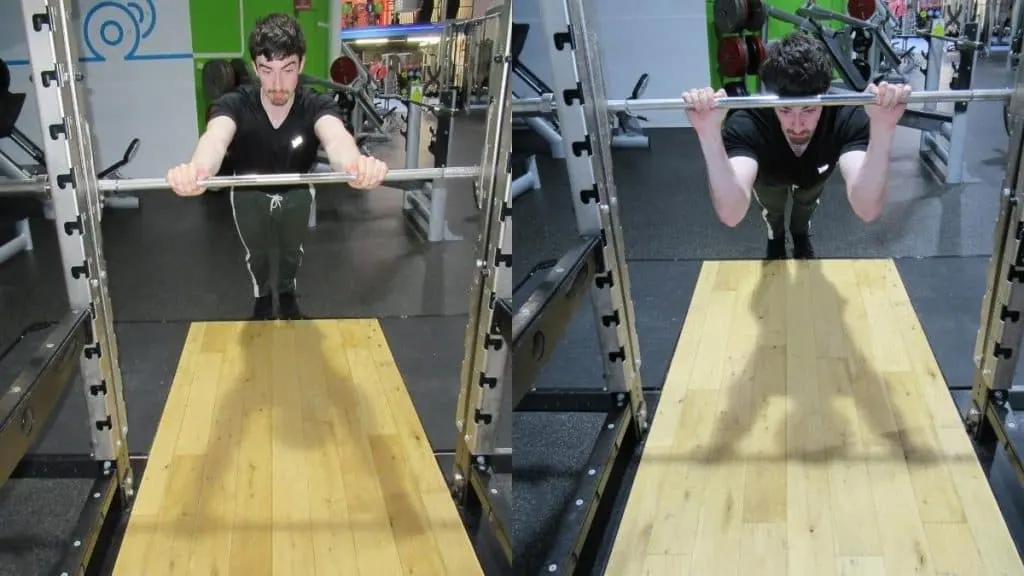
Forehead bodyweight skull crushers are a great middle-ground between the kneeling version and the full, head-under-bar bodyweight skull crusher.
The difference is that the forehead variation doesn’t train the long head of your triceps as well as the head-under-bar version because you’re not allowing any movement at your shoulders (shoulder extension is the second function of the long head).
That said, you are still going to be training the long head to an extent. And besides, if you’re performing other exercises like stability ball skull crushers or overhead extensions, you’re going to be training the long head there, so there’s no need to hammer it in every tricep exercise.
With forehead bodyweight skullcrushers, you want to hold the bar with a shoulder-width grip, brace your core, and ensure that your neck is in line with your back.
From there, lower your face toward the bar. Lifters will traditionally descend until their forehead is almost touching the bar, but you can also descend until another part of your face, such as your nose or chin, touches the barbell if that allows you to achieve a greater range of motion.
Once you’ve maxed out the range of motion and can’t descend any further, press your hands into the bar and extend your elbows to push yourself back up. Again, you’ll want to perform 3-5 sets of 12-20 reps so that you don’t put excessive amounts of strain on your elbows by lifting too heavy.
Table or desk bodyweight skull crusher

Given that barbells were designed for humans to hold in their hands, they’re obviously the most comfortable way to perform body weight skull crushers.
But with a little bit of improvisation, you can also perform the exercise on your desk, chair, or table.
Ideally, you want to use a stable piece of furniture that’s positioned against a wall so that it doesn’t tip forward under the strain of your body weight.
From there, just grip the edge of the piece of furniture and lower your head either toward or under it to get your triceps firing on all cylinders.
You can, of course, perform body weight skullcrushers with other equipment such as a plyo box or even on some metal fence. Any object that’s sturdy enough to grip and that can support your body weight is more than adequate for getting those tricep gains.
Smith machine bodyweight skull crusher
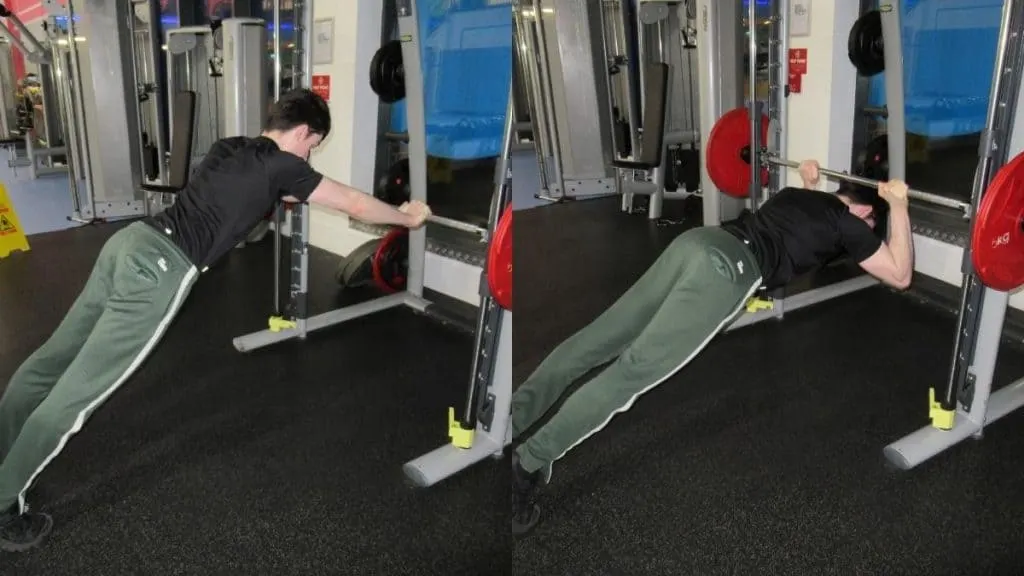
The Smith machine bodyweight skull crusher is a safe and effective mass-builder for growing your triceps.
By placing the barbell on the Smith machine safety stops, it can’t suddenly fall off a bar hook, which, admittedly, is highly unlikely to ever happen.
Nonetheless, if you want to perform bodyweight skulls with the utmost safety, then doing bodyweight Smith machine skullcrushers is your best bet.
The only downside, of course, is that not all gyms have Smith machines. And if you train at home, then the exercise is more or less out of the equation altogether.
One leg bodyweight skull crusher
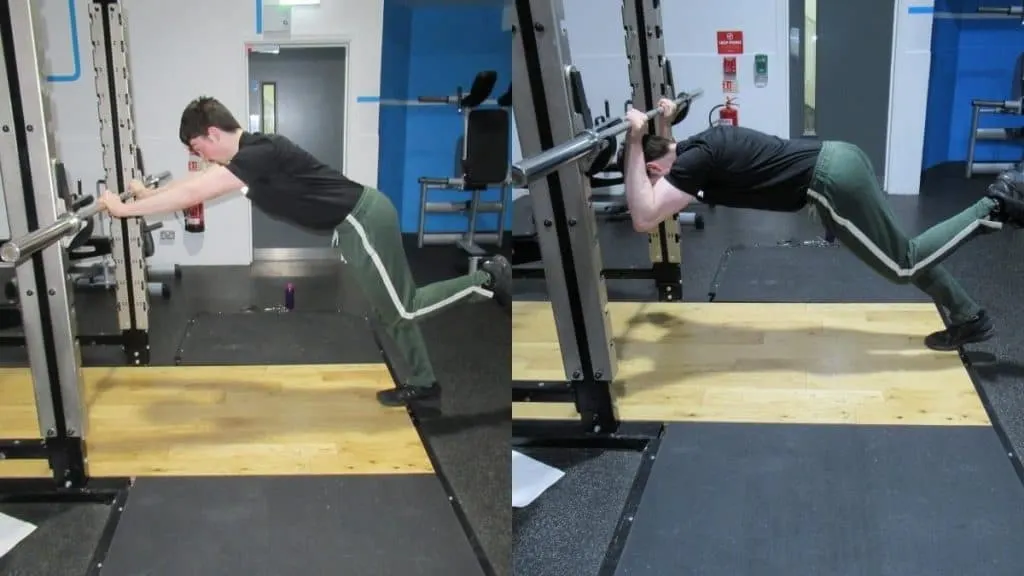
If you want to skyrocket your core activation while putting your triceps through a tough, muscle-building workout, then you need to do the single-leg bodyweight skullcrusher.
By lifting one leg off the floor, you’re—initially at least—making yourself less stable. As such, your abs have to compensate for your lack of contact with the ground by contracting even harder than usual.
While the sheer intensity of the abdominal contraction may make it slightly more challenging to focus on your triceps, it’s the best bodyweight skull crusher variation for developing upper body strength.
After all, calisthenics isn’t just about having plenty of muscle mass (although that’s certainly part of it).
You can never have too much core strength during bodyweight training.
And by performing one-leg bodyweight skull crushers, you’ll actually be improving your bodyweight exercise performance by getting your abs accustomed to contracting intensely for prolonged periods of time. This increased core strength, in turn, will enable you to tackle more demanding bodyweight exercises in order to improve both your skill and strength.
Double-up bodyweight skull crusher
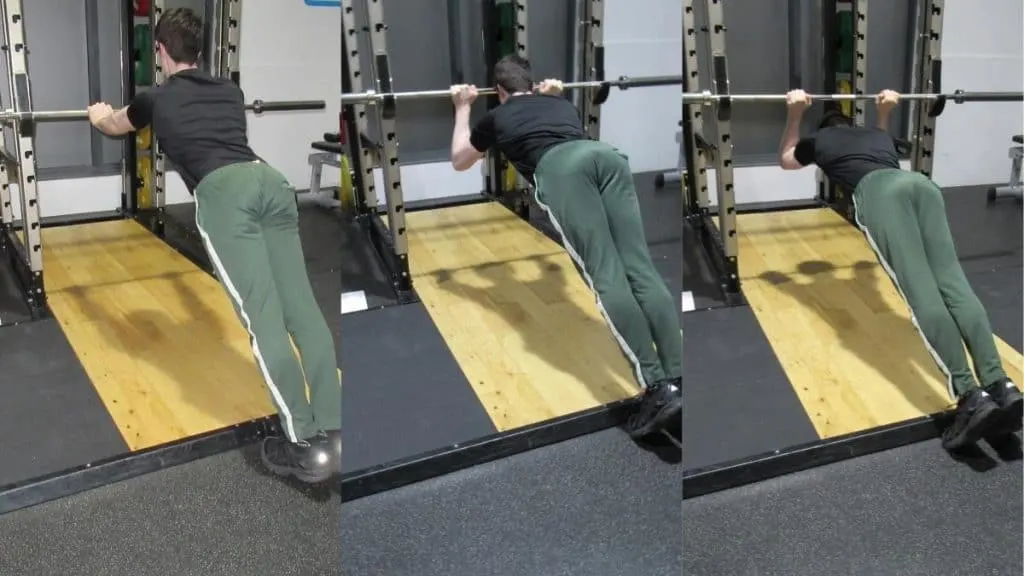
If you want to pump up your triceps and fill your sleeves, then you’ve got to try the double-up bodyweight skull crusher.
This intense calisthenics challenge begins with a full range of motion bodyweight skull crusher whereby you lower your head under the bar. But rather than completely extending your elbows after performing the first rep, you’re going to push yourself just halfway up and then lower your forehead to the bar. After that, you can lock your elbows out and prepare for the next tricep-taxing rep.
So it goes like this: One complete, head-under-the-bar rep immediately followed by a forehead-to-the-bar rep.
If you’re really hardcore, or if you just want to punish yourself for that cheat meal, then you can make this movement even more intense by adding external resistance in the form of a weighted vest.
For most people, however, the bodyweight-only version is challenging enough. It also makes a particularly good finishing exercise for ensuring that you’ve thoroughly recruited even the most stubborn triceps muscle fibers.
Conclusion: Who should do bodyweight skullcrushers?
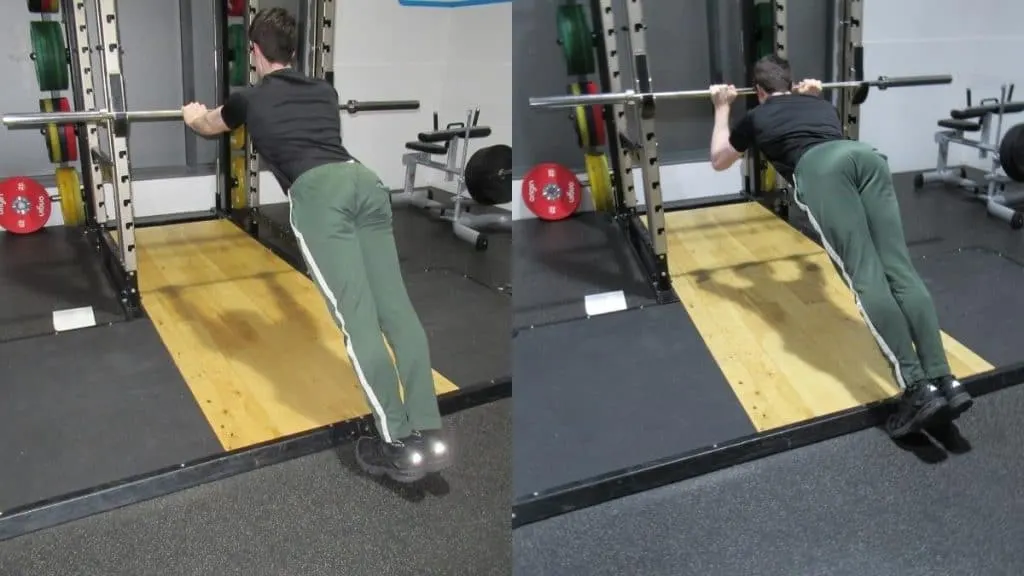
If you want a reliable exercise for growing and strengthening your triceps that doesn’t require any complicated equipment, then the bodyweight skull crusher is your best bet.
This muscle-building movement trains your triceps while simultaneously increasing your isometric core strength. As such, it has excellent carryover to just about any bodyweight or compound exercise, especially those that also work the triceps.
Virtually anyone can perform bodyweight skull crushers, regardless of their ability level. If you’re a weight training beginner, then you can get accustomed to the exercise by performing the kneeling version, which uses a lower percentage of your body weight for resistance.
On the other hand, if you’ve been lifting weights for years already, then you can challenge yourself with one of the advanced bodyweight skull crusher variations.
To tax your core even more, you might consider performing the exercise on one leg. Or, to give your triceps the best pump of their life, you could double up on your reps by performing a full range of motion skull crusher where you lower your head under the bar, immediately followed by a rep where you lower your forehead to the bar.

